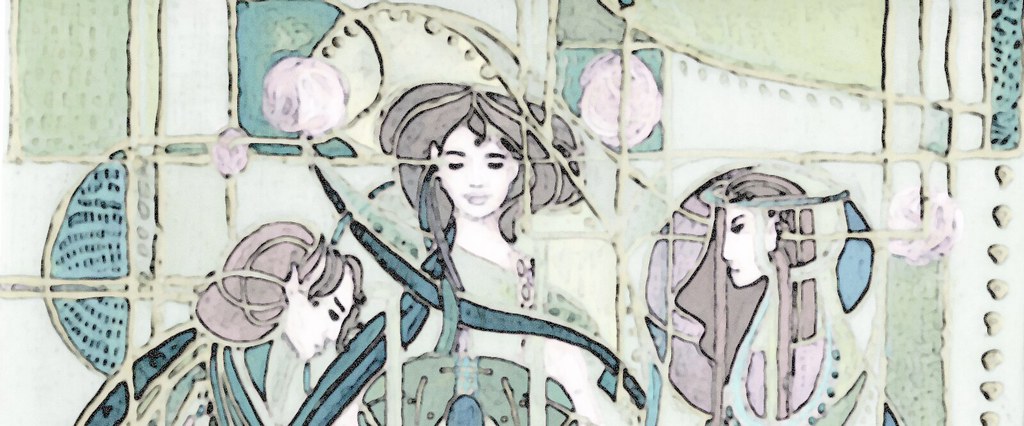They are also all produced by unclean animals. Jews and Muslims still tend to avoid carmine food dye as it is cochineal, another carmine producing insect. Though one could argue that one would have to ingest the colours to violate purity laws, there are plenty of examples of people being rendered unclean by simple contact with an unclean person or item. This is part of the reason I’m inclined to believe those Jews who argue tekhelet is murex; it then nests better with the other two colours on the symbolic level (though that is not necessary and really the colour IS indigo).
I don’t think it’s accidental that animal dyes were chosen, and unclean ones at that. The work of the tabernacle was all about cleansing and death and atonement.
Josephus mentions the colours when he describes the temple, associating tekhelet with the sky, argaman with the sea, and shani with fire. These do line up with some other things we know about the colours. As mentioned in my previous post each colour tends to be associated with different things, both in scripture and in later cultural practices of the Jews.
IT'S THE TRINITY U GUISE
A few years ago I wrote a post on abrash and trinitarianism, making the argument that natural dyes proclaim a sort of diversity like the trinity. Mem assures me this is not reaching like Origen for the crack pipe, but I do see a trinitarian structure to the colours used. Not simply by the fact that there are three colours and therefore bam it’s the trinity but in the afore mentioned symbolism.
As I mentioned previously, tekhelet blue covered most of the holy objects of the tabernacle and is the only colour laypeople were commanded to wear. Josephus’ comparison to the sky is most likely based on the fact that the original Sanhedrin see God standing on a “pavement of sapphire, clear as the sky”. Ezekiel and Isaiah see the glory of God the same way, enthroned in the crystalline blue of the heavens. Numbers gives the reason for the use of tekhelet tassels--to remind each individual to be holy to God. This colour is almost always used as a reminder of God and his holiness, often emphasizing his righteousness, “otherness” and power.
The symbolism for shani ranged almost contradictorily from sin to purification. While modern people often suppose that scarlet is associated with blood rites, it’s more often associated with cleansing rites and “fire” in scripture (usually blood was included separately). Fire is actually the primary purifier in the torah, with water being used when fire couldn’t be; but the scarlet wool features in both types of rites. Isaiah, while famously saying that scarlet sins become white, also says that such blood stains are washed away by a spirit of judgement and fire. He also associates the towla or worm with the unquenchable fire of judgement, a picture Christ echos later. It calls to mind that John said Christ would baptize not with water, but with “the Holy Spirit and with fire”. Of course the Holy Spirit manifests as fire in the new testament at pentecost, as God does several times in the OT.
While Josephus associates it with the sea due to it’s source in the same, purple almost universally signified royalty. When Christ was mocked he was wrapped in a purple cloth; the soldiers were clearly mocking Christ’s claim to be king of the Jews, the anointed one. But it’s hard to think the connection of Christ being wrapped in purple just as the altar of atonement was wrapped in purple is coincidental. This action, like the prophesy of the high priest, appears to me to be an unwitting acknowledgment of what he was truly doing. Again, of all the tabernacle articles, only the bronze altar was covered in purple. The significance of a bloody altar/Christ is hard to miss. Argaman, and not shani, is the colour of blood and atonement.
With all that said the colours seem to represent the triune nature of God, but perhaps even more the roles of the person of the Godhead in the salvation of man. It wouldn’t be surprising that the colours chosen intended to represent the God who met his people in the tabernacle. Not that I’d push it, but it doesn’t seem that far out. It’s through the workings of the persons of the trinity, in the place where God meets his people, that we are finally made holy, righteous and clean. The workings of the persons in bringing us into communion with God are all there.
As the writer of the epistle of Barnabas notes, in salvation he takes broken human beings and makes them into living stones of an incorruptible temple. In so doing, he makes us “partakers of the divine nature”. With that said, there’s a final piece to this puzzle, known as “shatnez”.

No comments:
Post a Comment